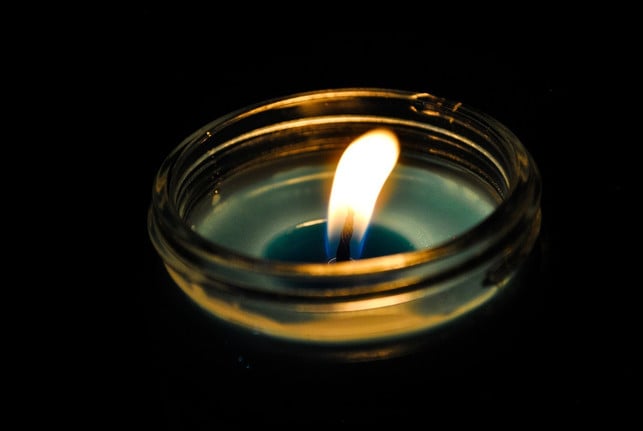
Scented candles can be unhealthy if they contain fragrances and other harmful substances. You can find out here what effects this can have and what you should pay attention to when buying scented candles.
Candles create a cozy atmosphere and are particularly popular in the run-up to Christmas. Scented candles are intended to create a pleasant atmosphere with the smells of fresh laundry, cinnamon, flowers and much more. But depending on the material and the ingredients they contain, candles and scented candles can have unhealthy effects.
How unhealthy are scented candles?
How unhealthy scented candles are basically depends on what ingredients they contain:
- Most traditional candles and scented candles are made primarily of paraffin – a substance made from petroleum. When paraffin burns, benzene is formed. This substance is considered carcinogenic, according to the Cancer Information Service.
- Some candles also contain lead and nickel. When the candles are lit, these substances are released into the surrounding air. According to ZDF, if children breathe in lead, it can affect brain, nerve and intelligence development. Nickel is also considered carcinogenic.
- Scented candles also contain fragrances. These can trigger headaches and allergies, Tristan Jorde from the Hamburg consumer advice center told ZDF.
- According to a 2021 study, scented candles also produce more fine dust and polycyclic aromatic hydrocarbons (PAHs) when burned than those without scent.
- According to the Cancer Information Service, scented candles that have a citrus smell are particularly problematic. Because they contain limonene as a fragrance. When limonene is burned, it produces formaldehyde – a substance that is also carcinogenic.
Low-emission candles: tips and advice

(Photo: CC0 / Pixabay / Ashutosh_Kaushik)
How unhealthy scented candles are and how high the risk of cancer they pose has not yet been sufficiently scientifically researched. So far there is no confirmed connection between scented candles and the development of cancer. What is certain, however, is that lighting candles and scented candles can increase the number of air pollutants we expose ourselves to in everyday life.
Since scented candles can trigger allergies due to the fragrances they contain and potentially release more pollutants into the air, it is advisable to avoid them and to prefer candles without a particular scent. The consumer advice center also recommends using simple candles without additional decoration. Glitter, paint and fake snow on candles can release additional pollutants when burned.
You can find more tips for low-emission candles here:
- When buying candles, look for candles with the RAL quality mark. The RAL quality mark prescribes certain standards for wax, wick, varnishes and paints in order to minimize pollutants.
- Candles made from biomass, rapeseed or soy wax are healthier and more sustainable than paraffin candles. You can find out more about this here: Candle guide: Sustainable organic candles without harmful substances, paraffin and palm oil.
- Make sure that candles are generally not exposed to drafts. Because then they cause more soot and therefore more pollutants.
- It also makes sense to ventilate the room well before and after burning candles.
Read more on Techzle\.com:
- Make candles and wicks yourself + pour candles
- Candles for the Advent wreath: This is what you should pay attention to
- Candle leftovers: 5 useful uses
** marked with ** or orange underlined Links to sources of supply are partly partner links: If you buy here, you are actively supporting Techzle\.com, because we then receive a small part of the sales proceeds. More info.